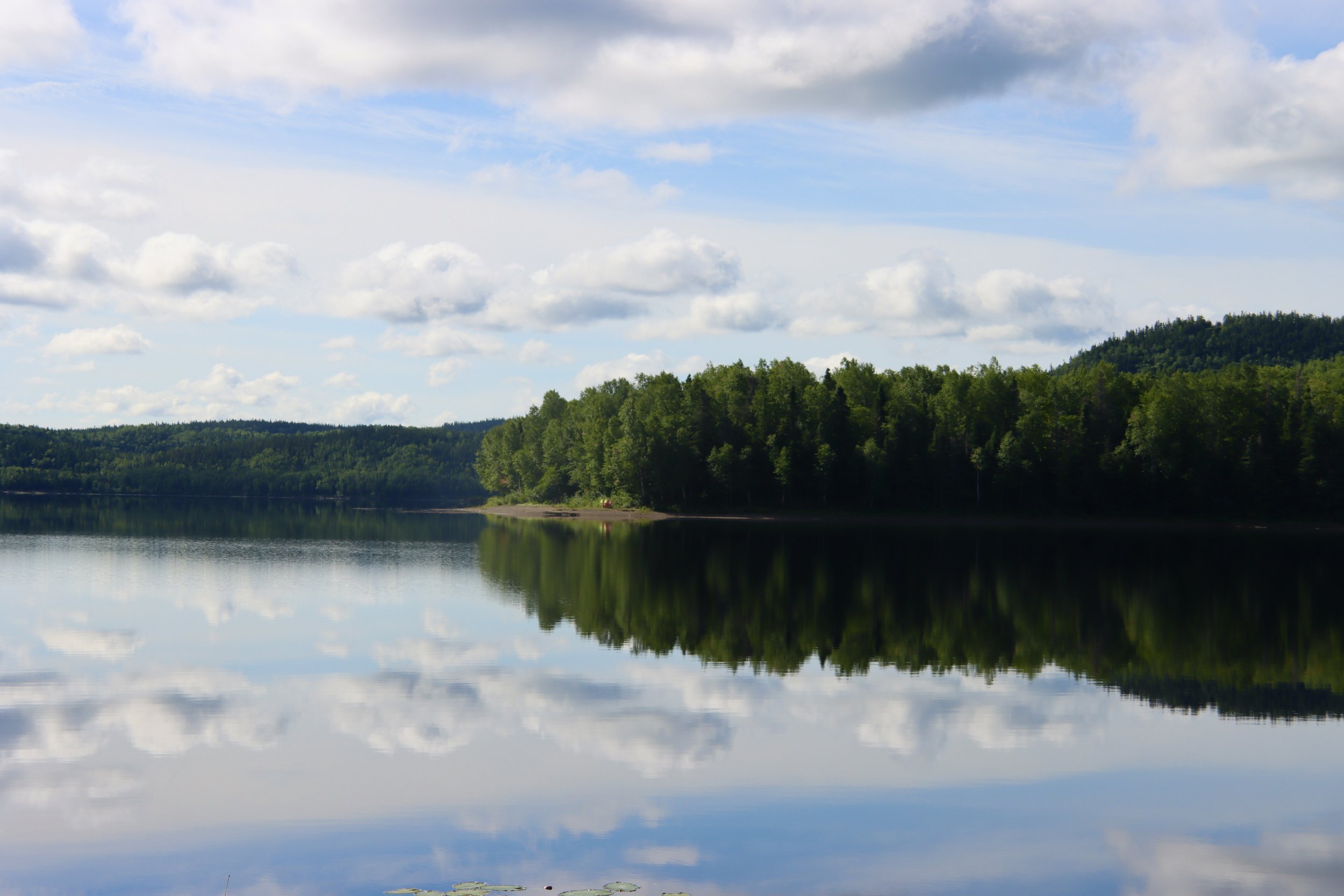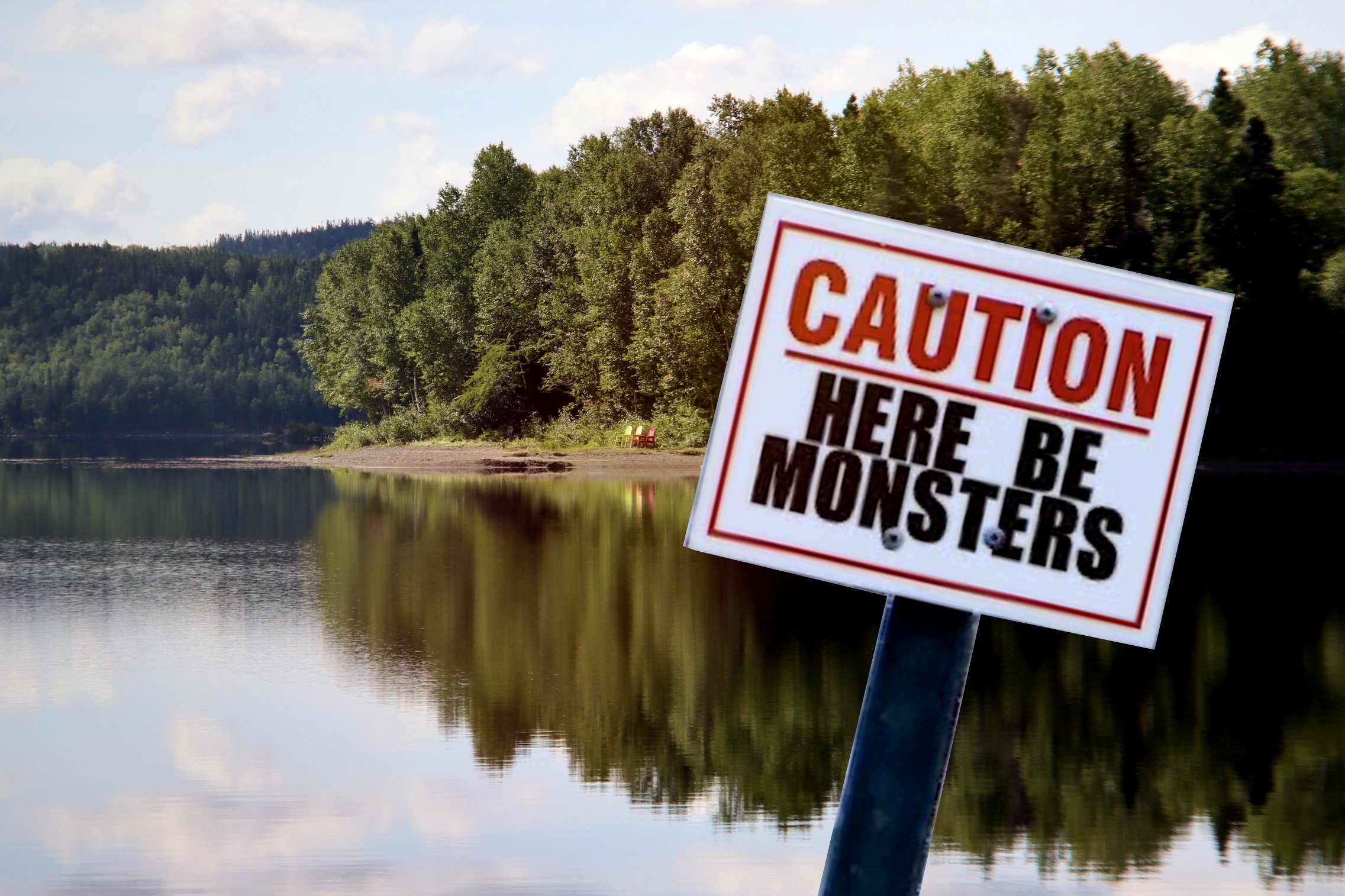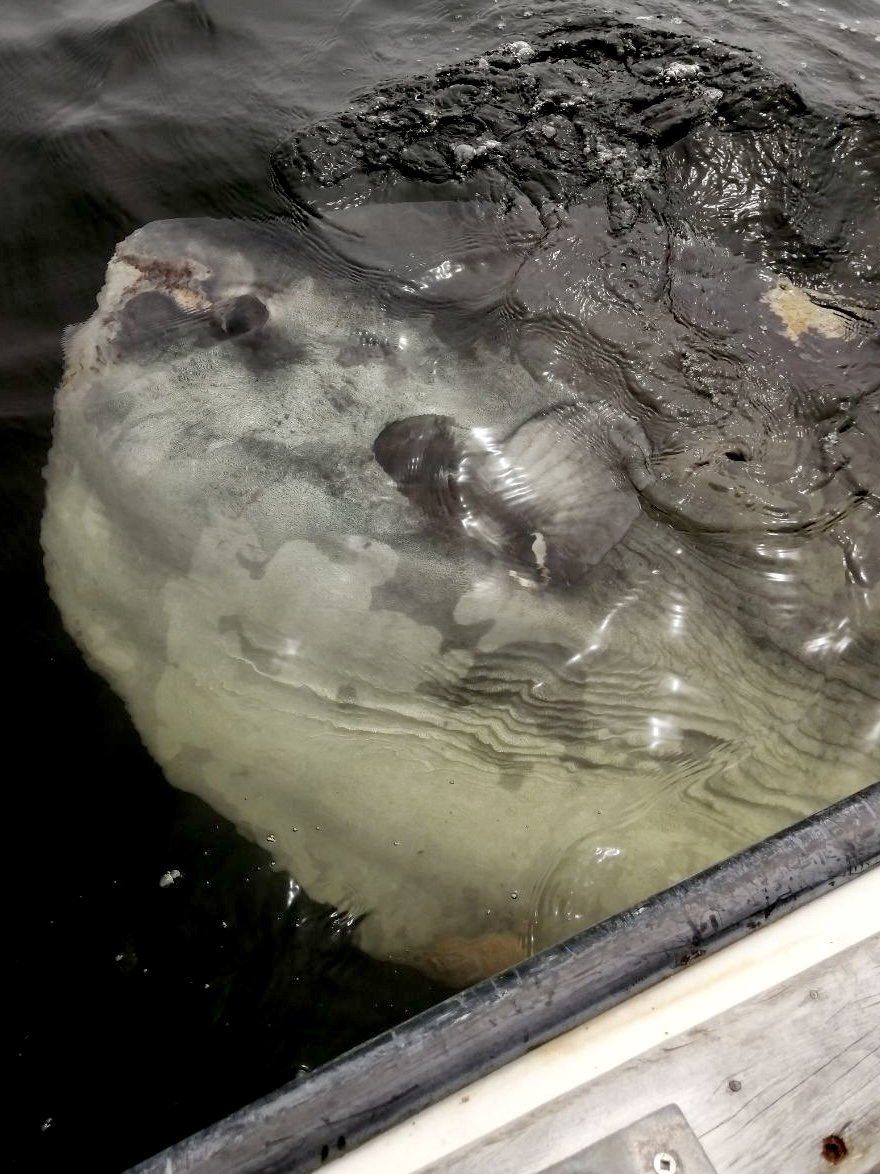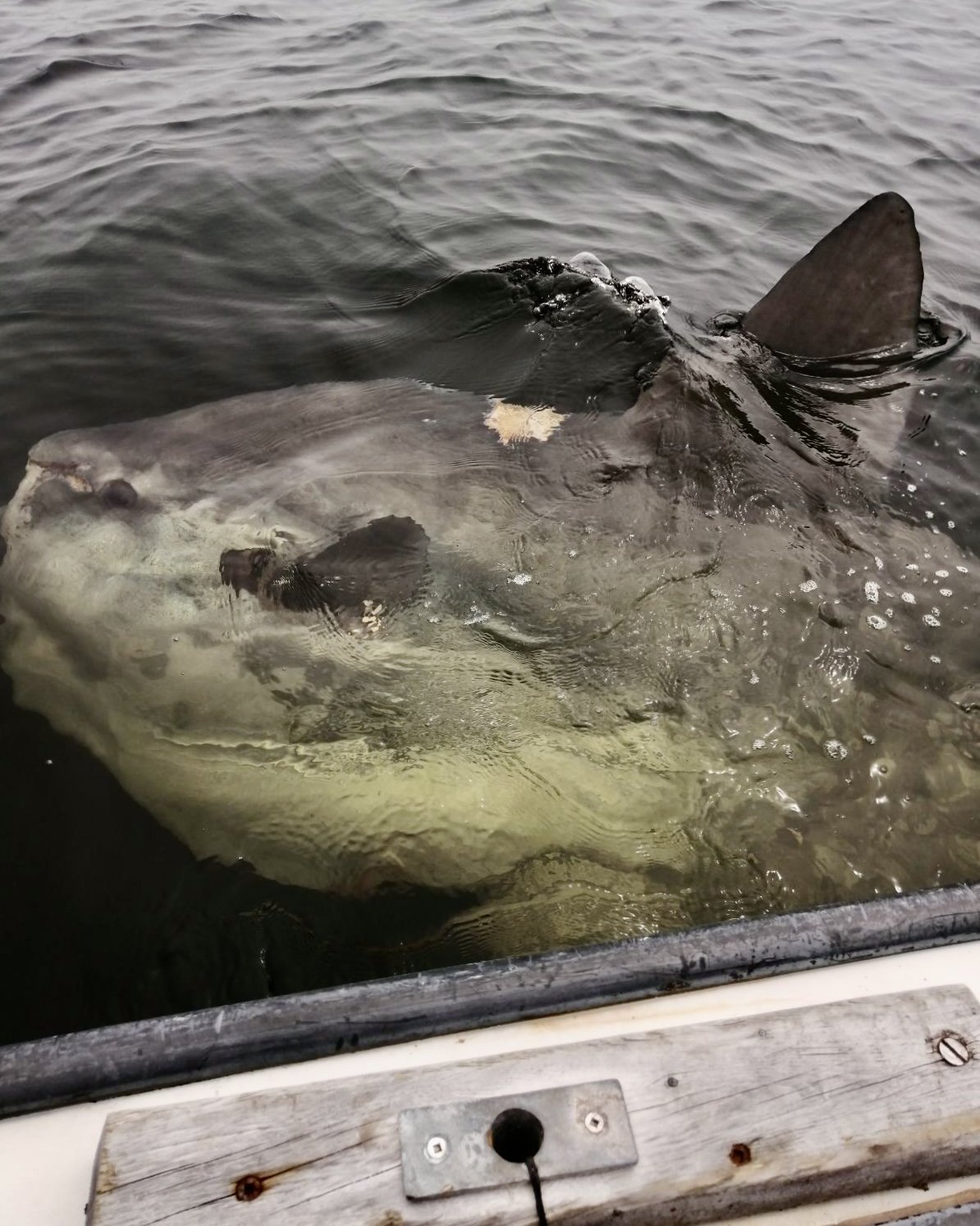Sea Serpents and Lake Monsters of Newfoundland
A perfectly calm Crescent Lake in Robert’s Arm, NL — who knows what mysteries lie beneath?
Newfoundland may have thousands of kilometres of fog-shrouded coastline but it’s not exactly an unexplored frontier. The peoples of Newfoundland always fostered a close relationship with the environment — they spent their days on the ocean or venturing into the dense spruce forests.
For all their familiarity, they sometimes saw things they couldn’t explain.
Monsterous things.
Often they told only their closest friends but, occasionally, their sightings were too big to keep secret and they made headlines in the newspapers. I’m glad they did; their stories are fun to read, great to ponder and, in some cases, enough to make you think twice about heading out on the open ocean ever again.
With that in mind, here are 10 times sea serpents and lake monsters broke to the surface and made headlines in Newfoundland.
Fortune Harbour Sea Serpent, 1888
Daily Colonist, September 15, 1888
On August 27, 1888 a giant animal was spotted by several fishermen near Fortune Harbour in Notre Dame Bay. The story was carried in the Daily Colonist on Sept 15, 1888.
The fishermen described the creature as having “a head of enormous size and two large fins on the back about 40 feet apart.” The animal, they estimated, was 120-ft in length. Despite the creature’s size, it was moving at an incredible pace — as fast “as a bird on the wing,” said one of the men.
The animal was seen again the next day (August 28th, 1888), this time near a small fishing boat. The fisherman, not knowing what the creature’s intent was, immediately began moving toward shore.
Fortune Harbour, 2022
The creature made no attempt to attack the boat, but kept pace for about 50 yards giving the fisherman plenty of time to observe it. It was dark brown, he said, with a lighter, brassy underside. It was reminiscent of a gigantic ‘seacat’ or eel but with a head like a bull-terrier.
The animal was described as being covered in slimy fur or bristles. It had a fin reached from the back of the head to the middle of the back, where it joined to a large hump reminiscent to those seen on whales but larger. On this occasion the animal’s size was judged to be somewhat smaller though still an impressive 85ft.
What the fishermen saw remains a mystery.
Steamer Sighting, 1900
A strange creature was seen by passengers aboard the steamer R.M.S. Assyrian as they were travelling between St. John’s, NL and Halifax, NS. A description of the sighting appeared in the May 25, 1900 edition of the Western Star.
According to the ship’s officers:
“The steamer slowed down as it neared the monster. There was great excitement on deck, the passengers crowding to the rail to get a good view. Many were the surmises as to what species this piscatorial monster belonged to. When within one hundred yards or less of the stranger, the steamer stopped. Those who at first thought it was a whale soon abandoned that idea, when its huge dimensions were seen. The body at the centre resembled in size and appearance half of an inflated balloon, and tapered off towards the tail and head. The monster measured at least 100 feet in length. The head was small in comparison with the body, and what appeared to be its ribs stood out like whip cords in bands on its side. Two men on board experienced in whaling, declared that the stranger not a whale. The steamer circled around it. Soon the huge tail and fins of the fish were seen moving lazily as it slowly swam from the ship.”
Monster of Mystery Lake, 1903
In the early part of the 20th century the interior of Newfoundland was a sparsely inhabited place with lots of spruce trees, bogs and, apparently, the occasional lake monster.
That’s basically true in the early 21st century too, though I can’t vouch for the lake monsters.
In any case, back in 1903 the Evening Telegram carried a brief story from Glenwood describing an aquatic monster ‘as big as a punt’ seen in an unnamed lake in the island’s interior. The note goes on to say “it has caused consternation amongst the guides and wood-rangers, who say it is a freshwater serpent”.
Corner Brook Aquatic Monster, 1915
Evening Telegram, July 17, 1915
The July 17, 1915 edition of the Evening Telegram contains the tale of a harrowing escape from an ‘aquatic monster’ near Corner Brook.
Several families travelling by motor boat from Curling to Humbermouth and Corner Brook encountered a huge fish off Crow Gulch. The animal rose from the water and made for one of the boats. It looked as if the creature intended to swamp the small craft. The surrounding boats could do nothing but watch in terror. Those who could, landed their boats at Crow Gulch and set about making a rescue plan to save those trapped by the monster. Several brave individuals directed their boats toward the endangered craft. The oncoming boats seemed to frighten the creature and the boat under attack was able to make a get away. Everyone escaped unharmed but many decided to walk the rest of the way home rather venture out on the water again.
Understandable.
Reports of a similar boat-attacking creature were made in Middle Arm at about the same time.
The newspaper is of the opinion that the creature was a known animal. They suggested it was a thrasher or sea fox — an animal we probably know better as a thresher shark these days.
Thresher sharks live in the western Atlantic from Newfoundland to Cuba and can grow to be a monsterous 6-metres in length.
UPDATE: checkout this 2022 footage of a thresher shark off Cape Breton, NS shared to TikTok by user @simon_dentremont.
Hawke's bay Sea Serpent Attack, 1920
Daily Star, Sept. 15, 1920
The St. John’s Daily Star (September 11, 1920) and Western Star (September 15, 1920) carried a story concerning a sea monster attack in Hawke’s Bay. Ted Perry of Parson’s Pond (or Kid Perry in the Western Star report) was fishing in his dory when he was attacked by a strange looking animal. The creature reared some six or eight feet up out of the water and lurched toward the dory. It was described as having a sharp nose, eyes like saucers and rows of teeth.
The animal slipped beneath the surface.
As Perry waited for it to re-appear in the same location, it came up behind him, on other side of the dory. The animal reached in over the boat, caught him by the pants leg and started to pull him toward the water. Thankfully, his pants tore and he was able to stay aboard.
Perry lay in the bottom of the dory as the animal continues lurching toward him. Meanwhile, a fisherman in a motor boat nearby saw what was happening. He came to offer assistance. Just as in the Corner Brook encounter, the sound of the oncoming motor appeared to drive the creature off.
The Western Star notes that some stories describe the sea monster as 80ft long with a huge shovel-like head sitting atop a snake-like neck. The truth, the paper decides, is that “a savage attack was made by what was probably a man-eating shark.”
Whatever it was, it must have been terrifying.
Clam Bank Cove Creature, 1936
“A slight improvement on the Loch Ness Monster.”
That’s how the August 11, 1936 edition of The Daily News described a creature sighted off western Newfoundland near Clam Bank Cove.
AI-aided enhancement of a sea serpent. Original image from the Biodiversity Heritage Library, public domain.
Details were scant but the ‘monster fish,’ had been sighted in early August and was said to be somewhere in the vicinity of 200-ft long! Reportedly it harassed fishermen in the area badly enough that it stopping them from fishing.
To be fair, any mystery animal twice the length of a blue whale might make me a bit nervous too.
Subsequent reports suggested that the creature in question might have been a tasker shark (?) attacking a whale.
The Bonne Bay Beast, 1943
Bay Roberts Guardian, July 31, 1943
“There is considerable excitement in Bonne Bay over the appearance of a strange and vicious fish which seems to be terrifying even whales,” or so begins a story in the Bay Roberts Guardian (via The Western Star) on July 31, 1943.
The newspaper describes an unidentified whale-like creature lurking in Bonne Bay. The animal had “a twisted horn like that of a cow” extending 3-feet from its head. The creature managed to drive one whale ashore in Norris Arm and perhaps attacked another.
According to an account by Mr. A. B. Harding of Norris Point, after a whale surfaced near his boat it submerged only to resurface moments later. After resting at the surface it submerged… in a 30ft circle of bloody water. It seemed some unknown creature had attacked it.
Rampant Speculation: A Narwhal?
Narwhal, 1894, public domain.
Could it have been a narwhal? While not common in Newfoundland, the narwhal, with its twisted tusk, does occasionally make it this far south.
They don’t, as a general rule, attack whales. That said, its not evident from the news report that anyone actually saw the Bonne Bay monster attack anything. The whale sinking in a cloud of blood may have had nothing to do with the horned creature.
It’s not clear.
Playful Poole's Island Monster, 1953
According to a report out of Poole’s Island published in the August 8, 1953 edition of the Daily News a fairly benign, maybe even playful, sea monster was spotted in Bonavista Bay.
Fisherman said the animal was 50ft long with a head like a seal, small dorsal fins and large tail. The animal was seen leaping out of the water and bringing its tail down with a ‘resounding splash.’
The creature appears to have been seen numerous times and in several places including Cabot Island Banks, Charge Rocks and “other parts of the province.”
AI-aided enhancement of a sea serpent, original image from the Biodiversity Heritage Library, public domain.
The Cape Spear Creature, 1954
Daily News, July 31, 1954
In July 1954 two fisherman from the Battery neighbourhood of St. John’s spotted an unusual animal on the fishing grounds off Cape Spear. Their story was reported in The Daily News (July 31).
The 40ft creature was described as having “frog-like eyes as big as saucers.” The animal slowly surfaced and appeared to rest, it was 6ft across its back, it had a head similar to a hippopotamus and a wide tail.
Whatever it was it didn’t seem to threaten the men or even the cod — the fish were described as plentiful despite the unusual visitor.
Cressie: The Crescent Lake Monster, Numerous Sightings
Cressie sculpture, Roberts Arm
Cressie, the lake monster that supposedly inhabits Crescent Lake (just outside Roberts Arm in central Newfoundland) is probably Newfoundland’s most famous ‘monster.’ It has a commemorative sculpture at the lake’s edge, it’s been featured in the television series MonsterQuest and seems to be seen more regularly than any other sea serpent/lake monster on this list.
Sightings of Cressie have made the news on more than one occasion.
A Cressie Rhyme
Go for a boat rideOr swim in Crescent Lake
But watch for old Cressie
Who's lying in wait.
--Excerpt of a poem by the Gr. 4 class of Crescent Elementary, Remembrances of Robert's Arm, 1995
In 1960 the Daily News reported four loggers from Roberts Arm saw a giant ‘eel’ in Crescent Lake. The men were booming logs when they spotted, what they thought was, an upturned dory on a sandbar. As they got close, it began moving, sending debris flying into the air.
In its escape back into the lake managed to bore a hole through the sand bar wide enough for a boat to pass through… or so the story goes.
That wasn’t the first report of Cressie and it certainly wasn’t the last — check out this CBC story concerning a sighting in 2003.
While it’s not exactly news (and clearly not without a vested interest) the Adventure Central Tourism organization published the following video concerning even more recent Cressie sightings.
So what is Cressie?
A submerged log in Crescent Lake
I certainly don’t know. As suggested by the 1960 report, Crescent Lake has long been used for logging. It’s probable that some of the sightings are logs, but that doesn’t mean all of them are.
Some have suggested that Cressie is a population of giant eels. And, I guess it could be… but Im not ready to bet the farm.
The enormous saltwater conger eel lives in the eastern Atlantic and can be found as far west as Iceland but they are not considered resident in NL’s waters. Even if they were to occasionally hang a left and check out Newfoundland, Crescent Lake is freshwater… and the Conger is not all about that.
Newfoundland and Labrador does have a population of American eels but they tend to reach a not-very-Cressie-like size of 1 metre. Big enough to be disturbing but small enough to avoid being called monsters.
To date, Cressie remains a mystery, and I think the mystery is okay.
The Truth Is Out There
“It’s such an interesting world. It wouldn’t be half so interesting if we knew all about everything, would it? There’d be no scope for imagination then, would there?”
Do I believe all the creatures described in these news reports represent new, never before described animals? Not for a minute.
But it’s fun to imagine a world of leviathans lurking just beyond sight, even if I can’t quite believe they are there.
I’m saying that, I don’t want to diminish the experience and knowledge of my ancestors — they spent their lives on the ocean and in the forest. And really, it only makes sense to think that if they said something was weird, it was.
Through that lens, it seems their is plenty of weird out there.
-
Have You Seen Cressie?, R.A. Bragg, Robert’s Arm community website.
Here be Dragons, Bruce Hynes, Breakwater Books, 2012.
Links to the cited newspapers are contained within each story.
More Monsters?
Check out this previous post about the story of a sea monster attack in 1888.















In 1888 the crew of ship Augusta encountered a sea monster off Newfoundland.